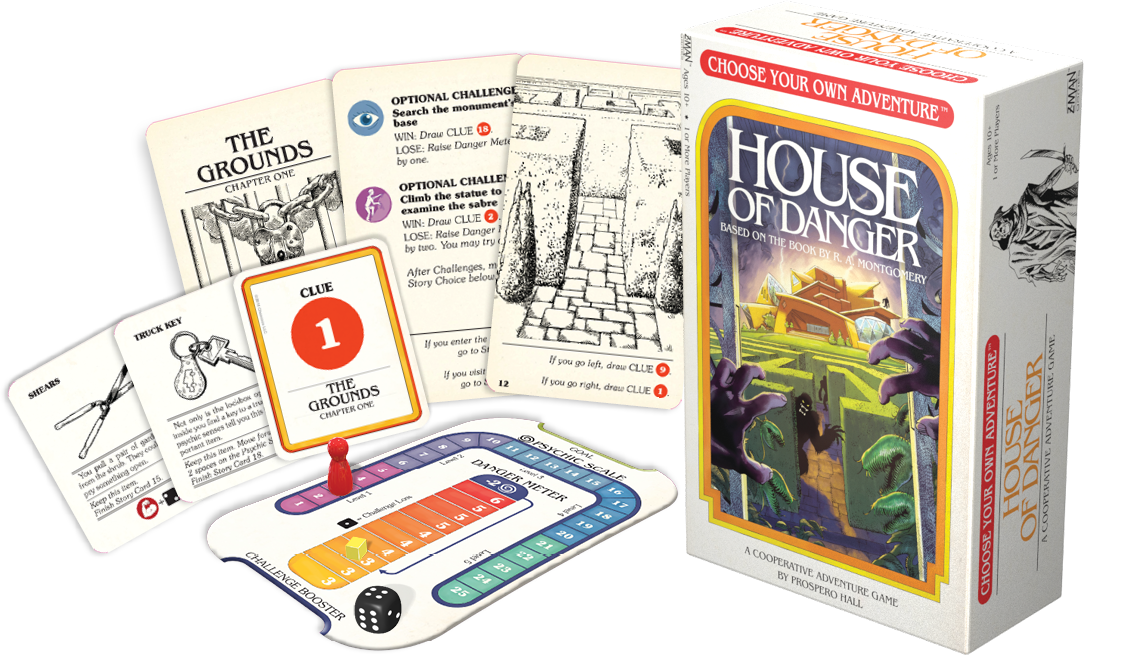House of Danger is a nostalgic updating of the original Choose Your Own Adventure® book as a mainstream card game. Two decks—one with locations, one with items—are divided into five “chapters”, so that you can play the game a chapter at a time over multiple sessions. Another advantage of arranging the deck in chapters is that you don’t have to search through as many cards (ironically, since the books never used chapters).
In Choose Your Own Adventure® books, unlike Fighting Fantasy Gamebooks and others, all you need to track is your page number. Stealing a page from those old fighting gamebooks (ahem), House of Danger adds an inventory system, a level system (your psychic skill as a psychic investigator), and a danger meter. Should your danger meter exceed 6, your skill takes two hits and then the danger meter drops. You will be rolling a die, adding modifiers, and trying to match or beat the danger meter to succeed.
A clever innovation are “premonitions”: clues that are pictures that warn of dangers to come. These provide a nice mitigation of the common “and now you die” pages (in this case, Story Cards). And in the book, you were supposed to start over, but more typically most of us kept a finger in the last page we’d read so that we could return to it. That’s formalized here – death costs you psychic skill, but then you resume from the last card, and take the other choice.
The book is the same hodgepodge of surreal clichés, you’ll remember from the series. (No spoilers!)
This game probably works best as an adventure with young children, reading to them and letting them choose. Alas, my 12-year-old (at the time) gave it a thumbs down, even while I appreciated the chance to share the story with him.
We did restart after losing all our psychic skill through three of the five chapters, and then sped through those three, now knowing the correct path. And, after we completed the book with a satisfactory if not optimal ending, we cheated and backtracked to look at what we should have done differently.
But honestly that seemed true to the original experience, too!
I don’t think the game has much replay value, but I shared it with a few members of our boardgaming group: fellow Gen Xers, who each enjoyed choosing their path down memory lane.


